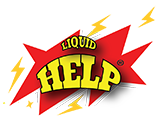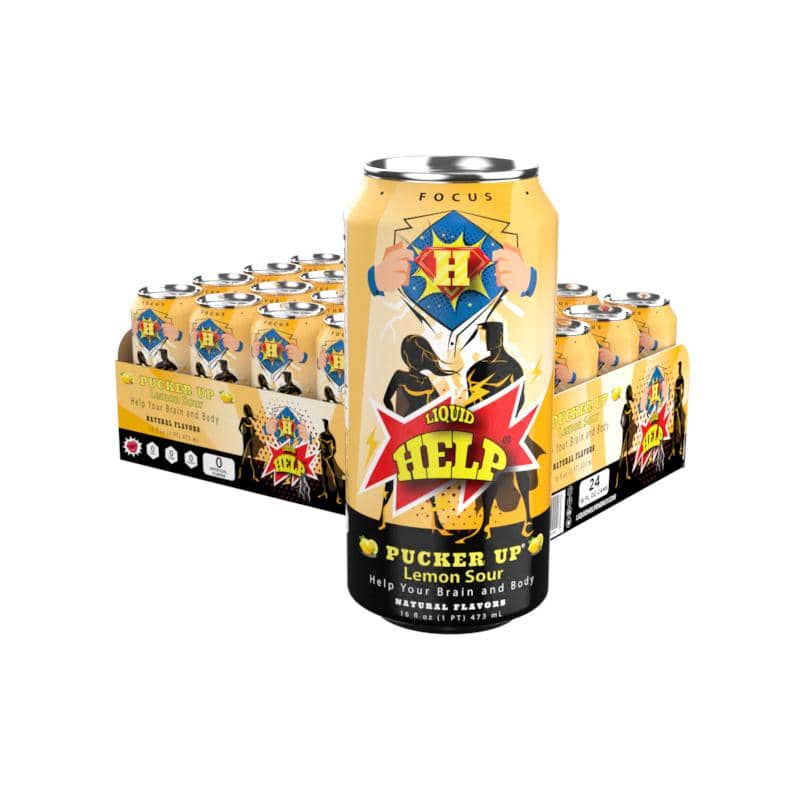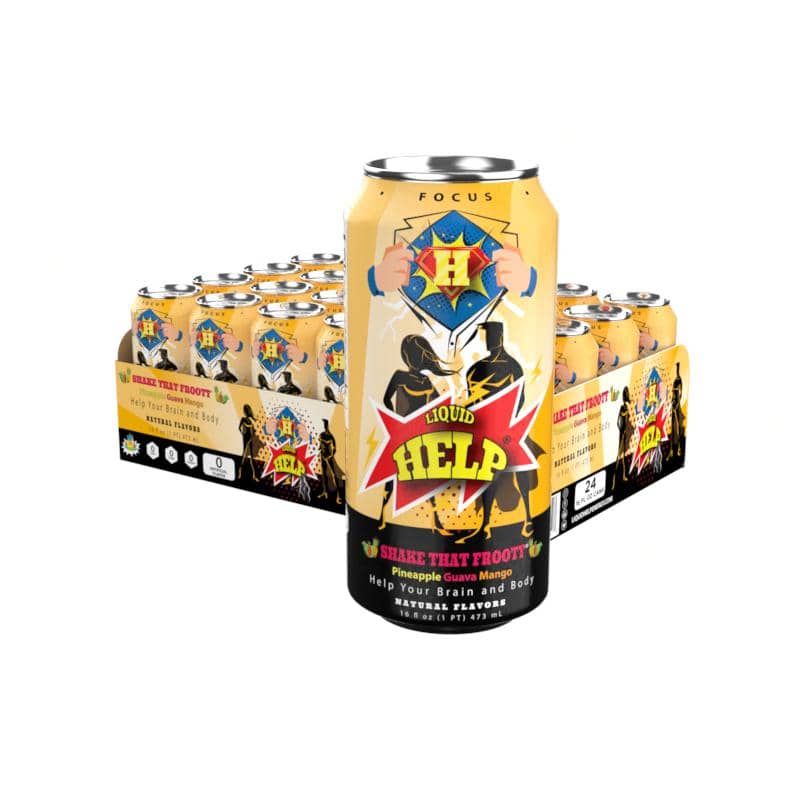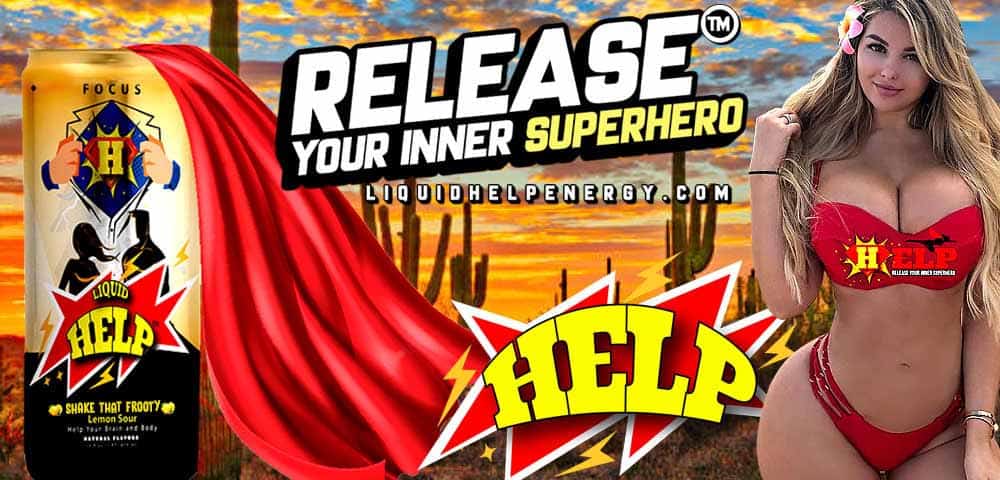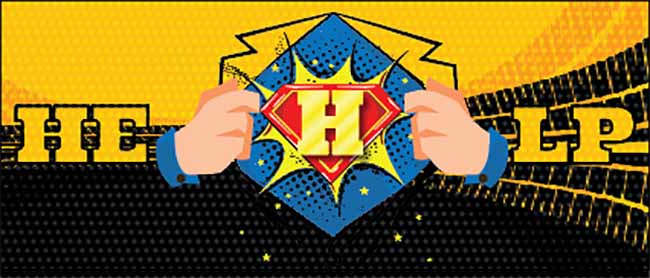Monster Energy Reviews
Call 1-833-634-4357 (HELP)
Monster energy drink reviews
Monster Ultra Sunrise
2018’s 13th highest-selling energy drink was Monster Ultra Sunrise. It tastes as you would expect based on the color of the can and the association with a morning beverage. It is orange flavored with hints of tangerine. It isn’t overly sweet just like most of the other Ultras and it’s easy to drink. Best energy drink to boost up your energy levels.
Sunrise’s Energy Blend
Surprisingly, Sunrise lists 150 mg of caffeine per can which is 10mg more than the other 4 Ultras have. Everything else seems the same.
Taurine, Panax Ginseng, L-Carnitine, Caffeine, Guarana, Glucuronolactone, Inositol, and B-vitamins.
The caffeine kicks in pretty fast and is about the same as an 8 fl oz of brewed coffee. I like that it is sugar-free and sweetened primarily with Erythritol, which is a natural zero-calorie sweetener.
If you like an orange-flavored beverage in the morning then Monster Ultra Sunrise may be a good way for you to wake up.
Sunrise doesn’t contain any real juice, so you’ll be disappointed if you were expecting that.
Ultra Black
Monster Ultra Black is for those that love black cherry flavored soda.
It has a good black cherry flavor and isn’t overly sweet. The flavor and sweeteners do a good job covering the energy ingredients and there is just a slight after-taste.
Ultra Black is different than any other flavor in the Monster Energy Drink Line but is a bit niche. Since black cherry soda isn’t hugely popular, I suspect this flavor of Ultra will have limited appeal.
Ultra Black Energy
With 137 mg of caffeine, Black provides about the same boost of energy. The caffeine kicks in fast and lasts for a couple of hours.
It is also zero calories and sweetened with erythritol, sucralose, and ace-k.
Overall, this is a good addition to the Monster Ultra Line and will likely appeal to those who like cherry flavored beverages.
Zero Ultra Energy Drink
Monster Zero Ultra is the company’s most popular addition to their energy drink line.
If Squirt Were an Energy Drink…
I couldn’t believe how much Monster Zero Ultra tasted like Squirt Soda.
If you aren’t familiar with Squirt, it’s a grapefruit/ citrus-flavored soda.
When I used to drink soda, Squirt was one of my favorites, so Zero Ultra’s flavor is a win with me. It’s light, refreshing, and they did a great job covering up the energy ingredients. The artificial sweeteners were blended well with just a slight after-taste.
I could have stood it a little less sweet, perhaps more like Fresca, but I imagine the sweetness is needed to cover the bitterness of the caffeine.
Monster Zero Ultra is a Tamer Beast
No surprises in the ingredient profile of Zero Ultra and it contains both Sucralose and Ace-K to round out its sweet taste.
As far as energy is concerned, Zero Ultra doesn’t have the same amount of energy blend as a Regular Monster does. Zero Ultra clocks in at 1400 mg per serving or 2800 mg per can. This is the same as Monster Absolutely Zero and puts the caffeine content at 140 mg per can.
With no sugar and less caffeine, this energy drink provides a smooth, even lift, with no sugar crash. Zero Ultra didn’t provide a huge buzz, but it did give me a nice lift for my afternoon.
I think Monster Zero Ultra is a good tasting energy drink for folks that love the energy but hate all the sugar in standard energy drinks.
Ultra Red Energy Drink
Monster Ultra Red Energy Drink has pretty much saturated the country now. In its early days of release, Ultra Red was in such high demand a guy was selling a can on eBay priced at over 100usd at auction!
Energy drink connoisseurs were sure eager to get their hands on Ultra Red!
I picked one up at the gas station to give Monster’s latest Ultra version a try.
Monster Ultra Red’s Flavor?
It seems like Monster is following Red Bull’s lead and creating a silver (zero), a blue, and an Ultra Red. Zero is citrus, Blue is a berry, Red is cranberry.
While there has been much debate among energy drink enthusiasts as to what the flavor of Ultra Red is, I definitely taste Cranberry, but with some other berry flavor thrown in to mellow out the tartness of the cranberry.
The flavor of Ultra Red is ok, but a little too artificial for my liking despite its “natural flavors” listed…
Energy Ingredients?
Monster Ultra Red has the same energy blend as Zero and Ultra Blue. This puts Ultra Red at the 140 mg of caffeine mark, which is 20 mg less caffeine than their traditional line of energy drinks.
The ingredients to look much like this:
Carbonated Water, Citric Acid, Taurine, Erythritol, Sodium Citrate, Panax Ginseng Extract, Potassium Sorbate, Caffeine, Acesulfame Potassium, Sodium Benzoate, Sucralose, D-Calcium Pantothenate(Vitamin B5), Gum Arabic, Niacinamide(Vitamin B3), Natural Flavors, Salt, Ester Gum, L Carnitine, L-Tartrate, Inositol, D-Glucuronolactone, Guarana Extract, Pyridoxine Hydrochloride (Vitamin B6), Red#40, Blue#1, Cyanocobalamin (vitamin B12).
Monster Energy Blend: Taurine, Panax Ginseng Extract, L-Carnitine, Caffeine, Glucuronolactone, Guarana Extract, and Inositol. Caffeine from all sources: 70 mg per 8 fl oz serving (140 mg per can).
Arizona Help Energy Drink Near Me
Sugar utilization can be terrible for you. Clinical Doctors inform for guys’ utilization concerning under 32.5 grams of sugar every day and for ladies under 25 grams of sugar for each day. For most grown-ups, utilization of up to 400 mg of caffeine daily has all the earmarks of being protected. In kids and young people, utilization of under 2.5 mg/kg every day gives off an impression of being sheltered. Pediatrician associates of the proprietor of Help caffeinated drink, state for young people, the worry is about reliance. Read a more thorough discussion on this topic made by the owner of Help energy who is a medical doctor graduate. Click here to see more – are energy drinks bad for you
Information on the impacts of caffeine in people is to a great extent acquired through epidemiological investigations. The greater part of the accessible proof is low quality and proposes that gentle to direct caffeine admission isn’t related to any unfavorable regenerative result. A methodical survey of 431 investigations distributed from 2001 to June 2019 presumed that, for solid pregnant ladies, utilization of up to 300 mg caffeine for each day was commonly not related to unfavorable conceptive or formative impacts. To see more of a medical fact discussion, of how much caffeine is safe during pregnancy – click here.
People Also Asked about Parkinson Disease and Caffeine
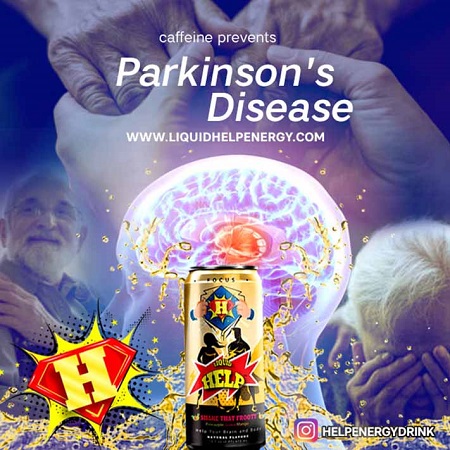
- Dopamine neuron degeneration in substantia nigra
- Acetylcholine surplus in the nucleus basalis of Meynert
- The relationship between coffee or tea and the risk of Parkinson’s disease has been described in several studies in hospital settings under the peer review of Medical Doctors. Under normal conditions, dopamine and acetylcholine are in electrochemical balance in the basal ganglia. A meta-analysis found evidence of a dose-response relationship between coffee or tea intake and decreased risk for Parkinson’s disease.
- Caffeine enhances dopamine signaling in the brain, as well as dopamine neuronal loss. The re-uptake in the pre-synaptic neurons is more effective with caffeine usage.
- This apparent protective effect is not observed in women taking postmenopausal hormone therapy, in whom caffeine seems to increase the risk for Parkinson’s disease, suggesting interactions between coffee and hormone use.
Caffeine intake results in improved alertness, mental energy, and the potential to concentrate, especially when people are fatigued or running at night. The lethargy is probably the essential reason why so many humans regularly devour caffeine. Caffeine mitigates the unfavorable results of sleep deprivation on a full style of cognitive functions. A systematic evaluation of thirteen randomized trials of persons with jet lag or shift paintings sickness determined that caffeine substantially improved idea formation, reasoning, reminiscence, orientation, interest, and perception compared with placebo. Caffeine is higher than a placebo in stopping errors and changed into also powerful as compared to different active interventions such as the use of modafinil (that is a Central Nervous System Stimulant medicinal drug) or brilliant light.
Sean Kaptaine owner of Liquid Help and Medical school graduate, investigated the question in a hospital setting under other medical students and medical residents, with attending present and found. Caffeine has proven to impact cognizance and temperament, both intensely and incessantly. Its belongings, nonetheless, shift contingent upon the investigation populace and the sum and span of caffeine devoured. In rested people, caffeine in low and moderate dosages, roughly 30 to 300 mg, improves cautiousness and response time. In restless people, caffeine’s constructive outcomes sum up to a wide assortment of capacities, including learning and dynamic and authentic exercises, such as car and airplane activity. People who are ongoing buyers of espresso and tea perform better on the different trials of psychological execution, such as response time and visuospatial thinking.
Medical Board-Certified Studies, from the owner of Help energy drink

Help Headache Caffeine
-
- Routine caffeine utilization is related to constant headache and pain-relieving bounce back cerebral pain. For a situation control study, patients with everyday caffeine utilization were bound to have interminable headaches and pain-relieving bounce back migraines than patients who did not consistently expend caffeine. It is important to hydrate while consuming caffeine. A dehydrated person, on average, can only absorb 10 ounces of water every 20 minutes. Overconsuming water can lead to water intoxication, which dilutes one’s plasma in one’s blood, leading to various issues.
People Asked About Migraine Headaches and Caffeine
-
- Migraines are most commonly present with a unilateral headache—4-72 hours of pulsating pain. Sometimes nausea, photophobia, or phonophobia can occur. A +/- aura of neurological symptoms before the headache, including visual, sensory, speech disturbances, can occur. Migraines happen due to irritation of cranial nerve five and release of substance P, CGRP, vasoactive peptides.
- Other common triggers of migraines are drinking wine and other food sensitivities, oral contraceptives, fasting diet, stress, menses, and bright light. Contraindication in treated migraine patients is oral contraceptives.
- Non-Pharmacological prophylaxis treatment is sleeping, darkroom, an ice pack on the head, decrease caffeine consumption per day, hydrate more, exercise, sweat to release more caffeine molecules.
People Asked About How Long Does Caffeine Last
-
- Caffeine half-life is about five hours plus or minus depending on the liver’s metabolism of the individual. It takes four half-lives to get out of one’s system. So, four half-lives would be twenty hours. However, the amount of caffeine in one’s system at two half-lives is usually a negligible amount to cause insomnia.
People Asked About Tension Headaches and Caffeine
-
- Tension headaches are the number one cause of headaches for adults. Tension headaches present with bilateral head pain, like a band squeezing the head. This headache typically lasts greater than thirty minutes with steady pain. Think of a thirty-year-old female who had a headache at the end of the day that worsens with stress and improves with relaxation and massage.
- Tension headache first line in treatment is Excedrin, which is an NSAID made with caffeine.
People Asked About Caffeine Withdrwawl
- Caffeine can cause direct vasoconstriction of blood vessels in the brain. However, one can get rebound vasodilation producing a rebound headache upon acute withdrawal of caffeine.
This message is from the owner of Help energy drink, educated in medicine. This information is not mainstream media like CNN, FOX, or some blog. However, many other associations can contribute to headaches, but we would be here for years discussing the possibilities. Stay updated on more medicine on Help Energy Drink’s youtube channel or Instagram.
Caffeine utilization is related to a diminished hazard for cirrhosis. In a meta-investigation including 16 observational examinations in the hospital, contrasted and nondrinkers, espresso consumers were more averse to create cirrhosis. Upon clinical research, ordinary caffeine utilization was connected with a lower pace of illness movement in patients with chronic hepatitis C.
Frequently Asked Questions
(All information is from Medical Drs in hospital settings used by medical students & residents)
